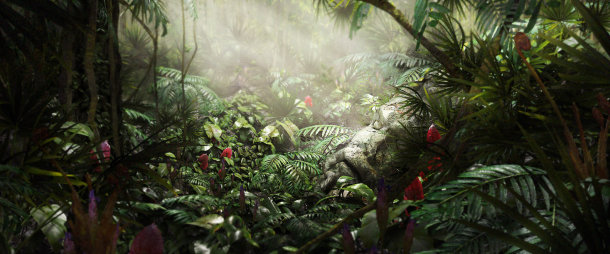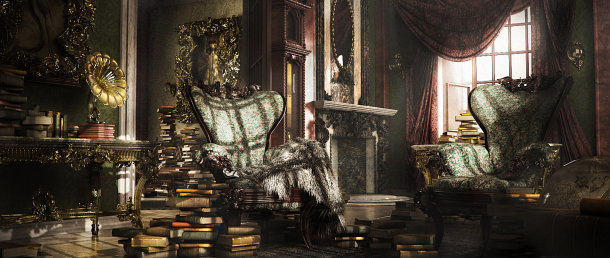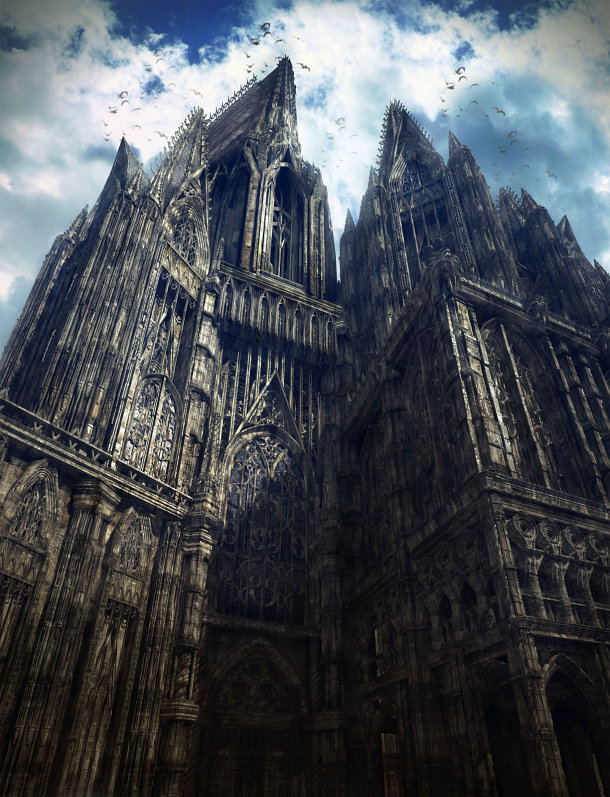Q&A: David Lesperance, environment sculptor
 David Lesperance has been professionally involved with 3D for the last seven years, specializing primarily in environment art. With a resume spanning games, architecture and CG productions, he is currently in the process of relocating to Seattle to work on Microsoft’s Halo franchise, having previously worked as Senior Cinematic Environment Artist at Blizzard Entertainment.
David Lesperance has been professionally involved with 3D for the last seven years, specializing primarily in environment art. With a resume spanning games, architecture and CG productions, he is currently in the process of relocating to Seattle to work on Microsoft’s Halo franchise, having previously worked as Senior Cinematic Environment Artist at Blizzard Entertainment.
In his working life, he focuses on phase development: solving the problem of how to tackle large sets quickly. “I’m always trying to speed my workflows up to tackle more and to learn more,” he says. A “huge fan of learning”, he strives to make 3D work both enjoyable and exciting.
In his session on Environment Sculpting for the Gnomon School of Visual Effects’ online Master Classes, which go out from 5-19 December, David reveals the nuts and bolts of his own design workflow.
The two-hour workshop will cover basic concepts of asset building, including grid space modeling, UVs, normal and displacement modelling and asset cleanliness, before moving on to lighting and rendering in V-Ray, including HDRI and physical camera set-ups. The class includes many of David’s own trade secrets for saving time when working in 3ds Max, ZBrush and Photoshop.
In the next of our series of interviews in the run up to the Master Classes, we caught up with David to discuss his working routine, his advice for young artists – and most of all, what environment sculptors actually do.

Sculpting isn’t just for characters, says David Lesperance: almost everything in a modern videogame – from vegetation to debris – gets a pass in ZBrush or Mudbox.
CG Channel: If you had to give a five-word pitch for the class, what would it be?
David Lesperance: Environment art tips and tricks.
CGC: What single thing do you most hope that people remember after finishing the class?
DL: I want them to have a better idea about general environment work. Actually doing the job requires a lot of skills, but I think this course will be a good foundation. There isn’t a lot of info about environment art out there, so hopefully I can hit on some cool stuff they might not know.

Environment sculpting demands different thought processes to character work. Good environment artists are often highly technical.
CGC: Let’s start with the basics, then. As an environment sculptor, what do you actually sculpt?
DL: At Blizzard, nearly all of the assets got a sculpt pass. Plants, ground planes, debris: they all got a ZBrush or Mudbox hit.
CGC: You create both hard surfaces and organic forms. Is the work more like character sculpting or more like architectural modelling – or is it better to think of it as separate discipline in its own right?
DL: In my opinion, they are two totally different art forms – and, in some productions, have totally different pipeline checks. Just because you do one, it doesn’t mean you’re an expert in the other.
Of course, there are skills that transfer. However, the thought process and even the methodology are pretty different. In my experience, some of the best artists for environments are fairly technical whereas characters require a different skill set.

Good environment work communicates the back story of each setting, advancing the story of a game.
CGC: What one piece of advice would you give to a young artist hoping to become an environment sculptor?
DL: Practise all the time. Learn and get feedback. But most of all, make sure you love what you do – after you do stuff for 70 to 80 hours a week, you really need to love it!
CGC: What part of your working day most makes you think: ‘This is why I do this job?’
DL: I get to create part of the story. It’s one thing to say ‘we are standing in a old castle’ – it’s quite another to show centuries of life, death, and the effects weather and construction. It helps the viewer buy into all of that.
CGC: And if you could wave a magic wand and change one thing about the profession, what would it be??>
DL: The long hours get hard, but I think it would be the job stability, especially for film. A lot of very talented people go from project to project, and it’s gotta be hard on their families.
Visit David Lesperance’s CGPortfolio gallery
Visit the Gnomon website to enrol for the Master Classes ($295 for all 14 classes)
Full disclosure: CG Channel is owned by the Gnomon School of Visual Effects.
